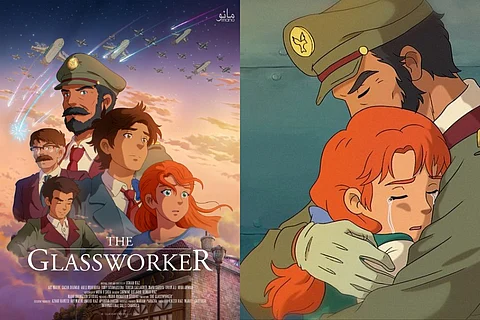
- HOMEGROWN WORLD
- #HGCREATORS
- #HGEXPLORE
- #HGVOICES
- #HGSHOP
- CAREERS
- ABOUT US
- CONTACT US

Animation is a medium for storytelling that, in my opinion, holds more power than any other. It’s unrestricted by the rules of realism, allowing creators to explore the furthest reaches of their imagination. But it also takes tremendous work. To create an animated feature film is a commendable feat even for the world’s biggest animation studios. In its most traditional form, animators hand-draw sequences frame by frame, putting their blood, sweat, and tears into every second of their projects. This process can take years, immense resources, and a huge team, and even then, is a huge undertaking.
This didn’t stop director, animator, and composer Usman Riaz. It all started with a vision of a young girl walking around a glass-blowing studio. The picture in Riaz’s mind was too vivid to be captured by cameras, and the rest of the movie that grew from this seed of an idea, too ambitious. The Pakistani multi-hyphenate then set off on a decade-long creative journey, instilling the help of his wife Mariam Paracha and cousin Khizer Riaz to bring his creative vision to fruition.
‘The Glassworker’ is Pakistan’s first hand-drawn animated film. Set in a fictional world inspired by Riaz’s home country, the movie tackles an anti-war message through its protagonist Vincent, his tumultuous relationship with his father, and his bond with a military colonel’s daughter, Alliz. Riaz takes a page out of the beloved Studio Ghibli’s book both through his thematic exploration and in the movie’s artistic style. As someone who, like many of us, grew up loving Hayao Miyazaki’s masterpieces, ‘The Glassworker’ is a nostalgic melding of two worlds. Alongside the threat of looming conflict that Riaz experienced in post-9/11 Pakistan, he brings his country’s fashion, colonial architecture, and local legends to the movie’s Ghibli-esque setting. Already, we see the beauty of animation come into play; it allows cultures to mingle and universes to bend, bringing nuanced concepts shaped by Riaz’s life in Pakistan to a fantastical setting.
This ambitious– and ultimately immensely successful– venture was only possible through crowdfunding. In 2016, Riaz and his team raised $116,000 through a Kickstarter campaign to start Mano Animation Studios. Mano is making history as Pakistan’s first hand-drawn animation studio, taking Riaz’s vision much farther than being a mere passion project. Notably, Riaz chose to pursue this venture in Karachi, despite opportunities to work abroad where resources and supportive infrastructure would be more readily available. He told the Animation World Network, “I want to show the people of Pakistan what’s possible and what we can create.”
The very creation of ‘The Glassworker’ is undoubtedly a triumph. It’s a testament to the power of artistic aspiration and community support. People rallied around Mano Animation and their support paid off. But ‘The Glassworker’s’ success is also a cause for reflection. While Riaz and his team were able to accomplish incredible things, other artists should be afforded the same opportunities without relying on unpredictable external sources. Creators everywhere deserve to be backed, not just by other laypeople, but by grander creative infrastructure. As we all celebrate the groundbreaking work Riaz and his team have done, let us also hold ‘The Glassworker’ as proof that beautiful art can emerge from anywhere, if given the chance.
Watch the trailer for ‘The Glassworker’ below.
If you enjoyed reading this, here’s more from Homegrown:
Apply To A Screenwriting Fellowship That Aims To Spotlight LGBTQIA+ South Asian Voices
From Partition To Present: The Evolution Of South Asian Science Fiction Literature
'Devi': Priyanka Banerjee's Short Dissects The Overlaps Between Rape Culture & Misogyny
